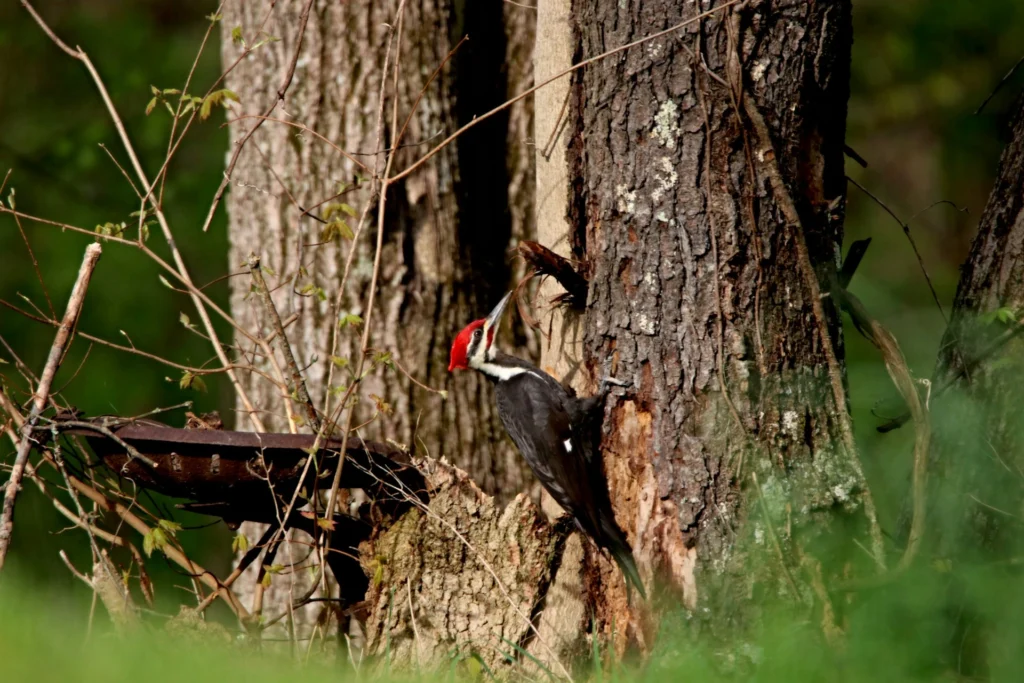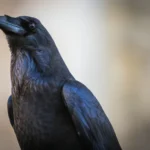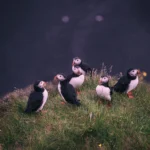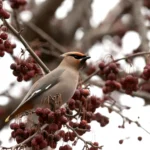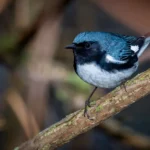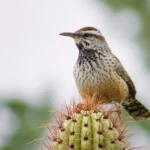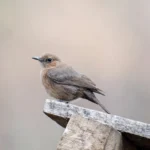Florida’s vibrant ecosystems, ranging from pine forests to wetlands, provide a perfect habitat for a variety of Florida Woodpeckers. Known for their rhythmic drumming and unique adaptations, these fascinating birds play crucial roles in maintaining healthy ecosystems. Whether it’s the Pileated Woodpecker, a striking giant carving through tree bark, or the tiny Downy Woodpecker flitting between branches, each species brings its own charm and ecological importance. With a mix of resident and migratory woodpeckers, Florida Woodpeckers offer birdwatchers and nature enthusiasts plenty of opportunities to observe these avian wonders in their natural habitats.
Table of Contents
Types of Florida Woodpeckers
1. Pileated Woodpecker
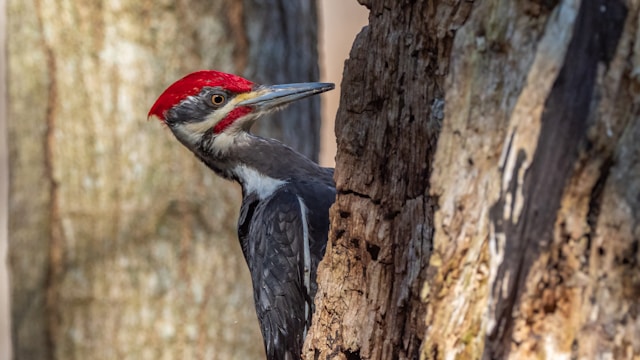
Scientific name: Dryocopus pileatus
Life span: Up to 12 years
Size: 16-19 inches
Weight: 8-12 ounces
Wingspan: 26-30 inches
The Pileated Woodpecker is the largest woodpecker in Florida, making it an iconic sight in the state’s forests.
Its bold black plumage, accented by white stripes on its face and a vivid red crest, make it unmistakable.
Preferring mature forests, these birds use their strong bills to carve large, rectangular holes in trees while searching for ants and beetle larvae.
Their loud, resonant calls often echo through wooded areas, signaling their presence.
Observing their industrious foraging and striking appearance makes them a favorite among birdwatchers and nature enthusiasts alike.

2. Red-bellied Woodpecker
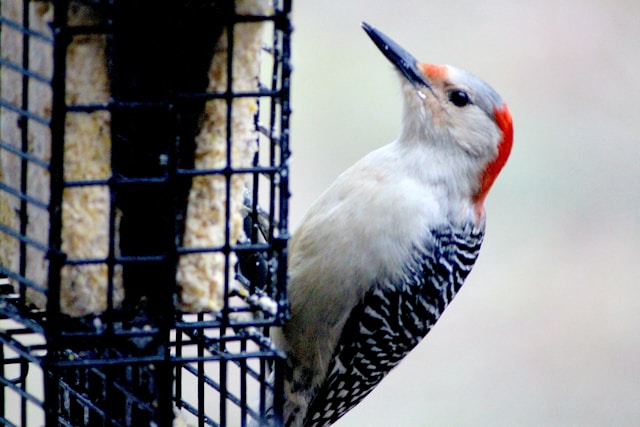
Scientific name: Melanerpes carolinus
Life span: 10-12 years
Size: 9-10.5 inches
Weight: 2-3 ounces
Wingspan: 13-16 inches
The Red-bellied Woodpecker is a common sight in Florida’s woodlands and suburban backyards.
Despite its name, the reddish hue on its belly is faint and often hard to notice. More prominent are its red cap and nape, which contrast with its black-and-white striped back.
This versatile woodpecker thrives on a varied diet, including insects, fruits, nuts, and seeds.
Its distinctive, rolling calls and adaptability to human-altered environments make it a frequent visitor to feeders, providing ample opportunities for close observation.
3. Downy Woodpecker
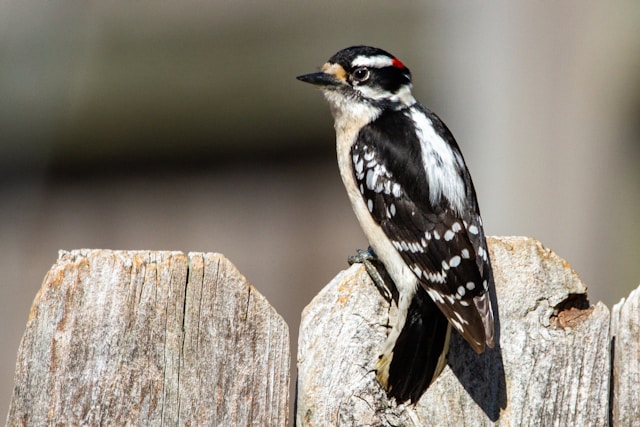
Scientific name: Dryobates pubescens
Life span: 4-5 years
Size: 5.5-7 inches
Weight: 0.7-1 ounce
Wingspan: 9-11 inches
As Florida’s smallest woodpecker, the Downy Woodpecker charms bird enthusiasts with its diminutive size and spotted black-and-white plumage.
These birds are highly active, often seen flitting between trees and visiting backyard feeders.
Their diet primarily consists of insects, supplemented by seeds and berries.
Known for their whinnying call and gentle tapping on tree bark, Downy Woodpeckers are approachable and easy to spot, making them a favorite among novice birdwatchers.
4. Hairy Woodpecker
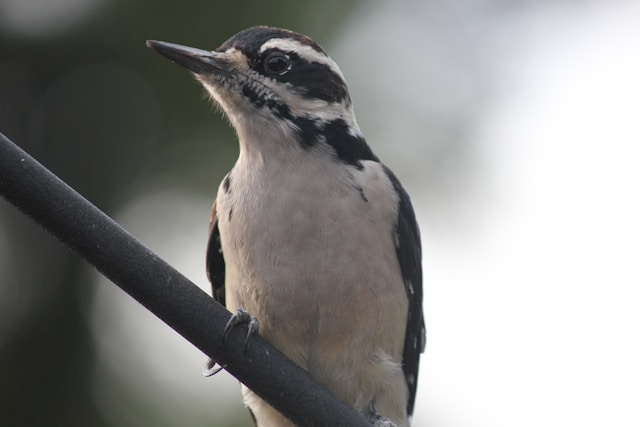
Scientific name: Dryobates villosus
Life span: 5-6 years
Size: 7-10 inches
Weight: 1.5-3.4 ounces
Wingspan: 13-16 inches
Slightly larger than the Downy Woodpecker, the Hairy Woodpecker shares similar black-and-white markings but has a noticeably longer bill.
These birds prefer mature forests and wooded areas, where they forage for insects beneath tree bark.
Occasionally, they consume sap and fruit as well. The Hairy Woodpecker’s sharp, piercing call and vigorous drumming make it a key indicator of a healthy forest ecosystem. Observing this species provides insight into the dynamic role woodpeckers play in their habitats.
5. Red-headed Woodpecker
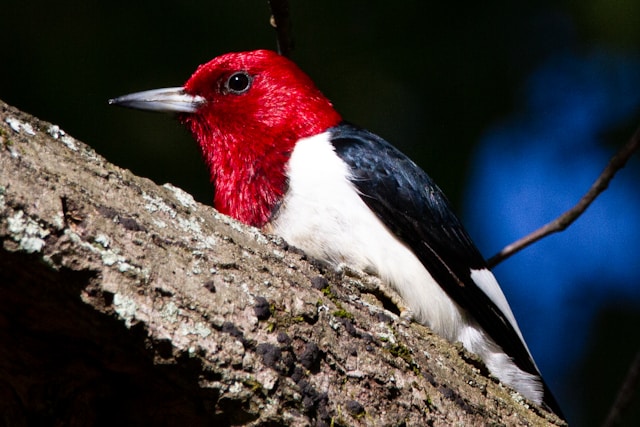
Scientific name: Melanerpes erythrocephalus
Life span: 9-12 years
Size: 7.5-9 inches
Weight: 2-3.2 ounces
Wingspan: 14-17 inches
The Red-headed Woodpecker is a striking bird, known for its completely red head, bright white body, and black wings with white patches.
This species exhibits remarkable behavior, such as catching insects in mid-air and storing food in tree crevices for later consumption.
Found in open woodlands and savannas, these woodpeckers are highly territorial and vocal.
Their bold coloration and fascinating habits make them a highlight for birdwatchers exploring Florida’s natural areas.
6. Northern Flicker
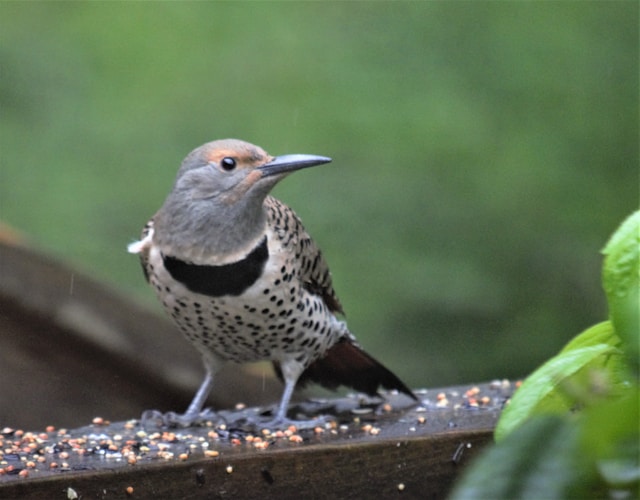
Scientific name: Colaptes auratus
Life span: 6-9 years
Size: 11-12 inches
Weight: 3-5 ounces
Wingspan: 16-20 inches
The Northern Flicker stands out among woodpeckers with its brownish plumage, black spots, and red nape.
Unlike most woodpeckers, flickers often forage on the ground, feeding primarily on ants and other insects. Their loud, clear calls and unique ground-feeding behavior distinguish them from other species.
Found in open woodlands, fields, and suburban areas, the Northern Flicker’s adaptability makes it a versatile and fascinating member of Florida’s avian community.
7. Yellow-bellied Sapsucker
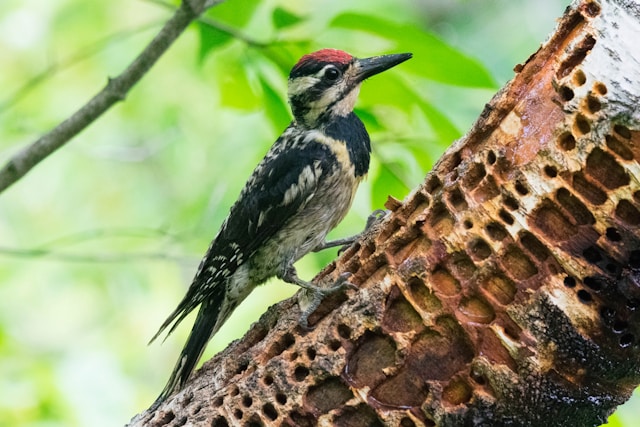
Scientific name: Sphyrapicus varius
Life span: 6-7 years
Size: 7-8.5 inches
Weight: 1.5-2 ounces
Wingspan: 13-16 inches
The Yellow-bellied Sapsucker migrates to Florida during winter, bringing its unique sap-feeding behavior to the state.
This medium-sized woodpecker drills neat rows of holes in tree bark to extract sap and catch insects attracted to the sap.
Its pale yellow belly and black-and-white striped face help identify it.
Observing the intricate rows of sap wells left behind provides a glimpse into the resourcefulness and adaptability of this migratory bird.
8. Red-cockaded Woodpecker
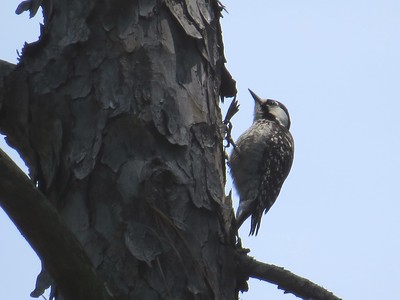
Scientific name: Dryobates borealis
Life span: Up to 15 years
Size: 8-9 inches
Weight: 1.5-2 ounces
Wingspan: 14-15 inches
The Red-cockaded Woodpecker is an endangered species, relying heavily on mature pine forests for survival.
It is characterized by its black-and-white barred back and small red streaks on its head, known as cockades.
This species nests in live pine trees, a behavior unique among woodpeckers.
Conservation efforts in Florida focus on preserving and restoring suitable habitats to protect this rare and ecologically significant bird.
9. Ivory-billed Woodpecker
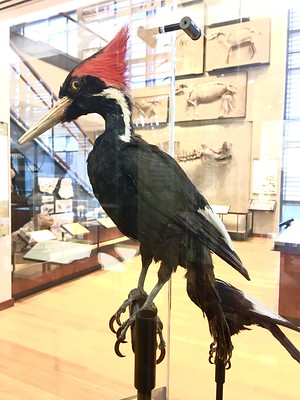
Scientific name: Campephilus principalis
Life span: Unknown
Size: 18-20 inches
Weight: 16-20 ounces
Wingspan: 30-31 inches
The Ivory-billed Woodpecker, long thought to be extinct, remains an enigma in the birding world.
This large woodpecker, with its striking black-and-white plumage and ivory-colored bill, is occasionally reported in remote areas of Florida.
These unconfirmed sightings fuel hope and inspire continued conservation efforts for old-growth forest habitats. While elusive, the Ivory-billed Woodpecker symbolizes the importance of protecting biodiversity.
10. Acorn Woodpecker
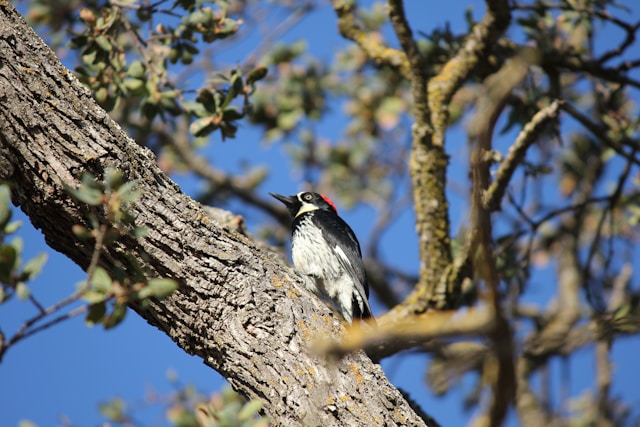
Scientific name: Melanerpes formicivorus
Life span: 8-15 years
Size: 8-9 inches
Weight: 2-3 ounces
Wingspan: 13-15 inches
The Acorn Woodpecker is a rare visitor to Florida, easily recognized by its colorful appearance featuring a red crown, white face, and black back.
Known for its remarkable behavior of storing acorns in specialized holes drilled into tree trunks, this species exhibits complex social structures.
While more common in the western United States, occasional sightings in Florida make it a fascinating subject for bird enthusiasts.
11. Golden-fronted Woodpecker
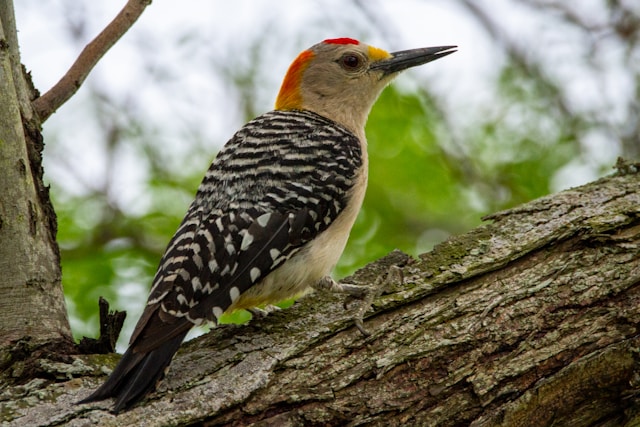
Scientific name: Melanerpes aurifrons
Life span: 6-10 years
Size: 8.5-10 inches
Weight: 2.5-3.5 ounces
Wingspan: 15-17 inches
The Golden-fronted Woodpecker is a striking bird known for its vibrant golden-yellow crown and nape, contrasting with black-and-white striped wings and pale gray underparts. Native to the southwestern United States and Central America, this species occasionally appears in Florida, delighting birdwatchers.
Preferring open woodlands and scrublands, it thrives in areas with scattered trees like pecan groves.
These adaptable omnivores feed on insects, fruits, seeds, and sap, playing a vital role in ecosystems by dispersing seeds.
They nest in tree cavities, with both parents sharing in raising their young. While not endangered, preserving natural habitats is crucial for their long-term survival, ensuring future generations enjoy this beautiful species.
12. Gila Woodpecker
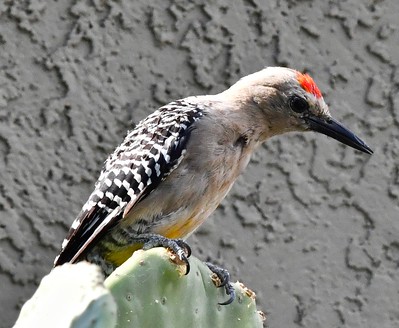
Scientific name: Melanerpes uropygialis
Life span: 7-8 years
Size: 8-9.5 inches
Weight: 2-3 ounces
Wingspan: 15-17 inches
The Gila Woodpecker is a medium-sized bird native to desert regions of the southwestern United States and Mexico.
Recognizable by its light brown head and body, black-and-white barred back, and a red cap on males, this species is perfectly adapted to arid environments. It thrives in saguaro cacti, where it nests in cavities it excavated.
A versatile feeder, the Gila Woodpecker eats insects, fruits, nectar, and seeds. It plays a key role in its ecosystem by pollinating plants and dispersing seeds.
Though not endangered, habitat loss poses challenges, making the conservation of desert landscapes vital for its continued survival.
Conclusion
Florida’s woodpeckers showcase the state’s rich biodiversity, from the diminutive Downy Woodpecker to the enigmatic Ivory-billed Woodpecker. Whether in forests, wetlands, or suburban backyards, these birds captivate with their vibrant colors, unique behaviors, and rhythmic drumming. Grab your binoculars and explore Florida’s natural wonders to spot these incredible birds in their habitats!

Welcome to World Birds Life, where the wonder of birds takes center stage. My name is Lexi, and I’m passionate about helping you discover the beauty and joy that birds bring into our lives.

